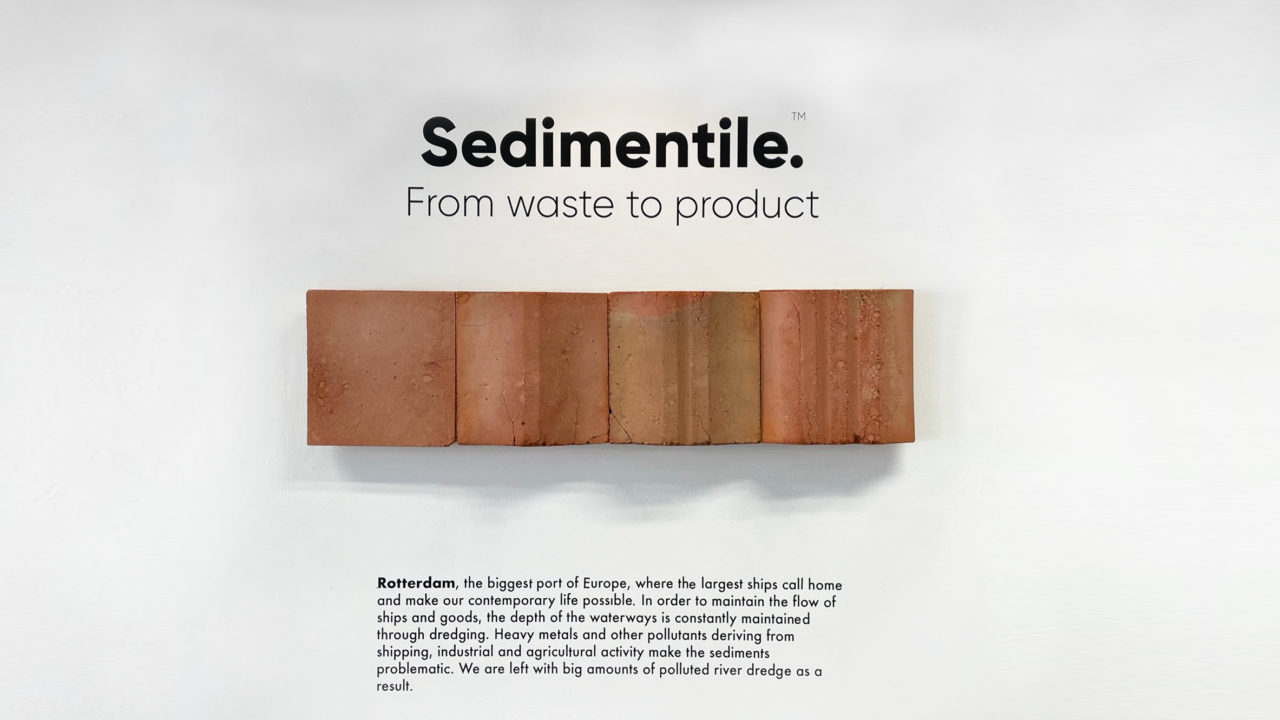Sedimentile

Project details
- Year
- 2022
- Programme
- product-design
- Practices
- Commercial
- Minor
- New Frontiers

Rotterdam, the biggest port of Europe, where the largest ships call home and make our contemporary life possible. In order to maintain the flow of ships and goods, the depth of the waterways is constantly maintained through dredging. Heavy metals and other pollutants deriving from shipping, industrial and agricultural activity make the sediments problematic. We are left with big amounts of polluted river dredge as a result.
Currently over 750 000 tonnes of sediment is dredged yearly and a big part of it goes to the designated landfill at the port called Slufter.
Over time the disposal of this waste became more and more expensive as a result of regional regulations and closure of disposal sites. Is there a financial incentive to look out for alternative use other than dumping?
As a product designer I see an opportunity to take advantage of the characteristics of this material, namely its clay content and the possibility to make ceramic products. By doing so the pollutants remain encapsulated within the ceramic product. The choice to design for the construction industry is motivated by the negative impact this sector has on the environment and the opportunity to prevent large amounts of material from ending up as a waste. By not using virgin materials we convert a linear material stream to a circular one, encapsulating the pollution in the meantime.
This often invisible and intangible material stream comes to us in the form of facade tiles that form tangible surfaces and tell a story of the water with their visual language.Their shapes take inspiration from the waves and allow the architect and designer to create a unique surface every time, giving wider application to the product.
This project was made possible thanks to my collaboration with the oldest dredging companies in the world, Boskalis.